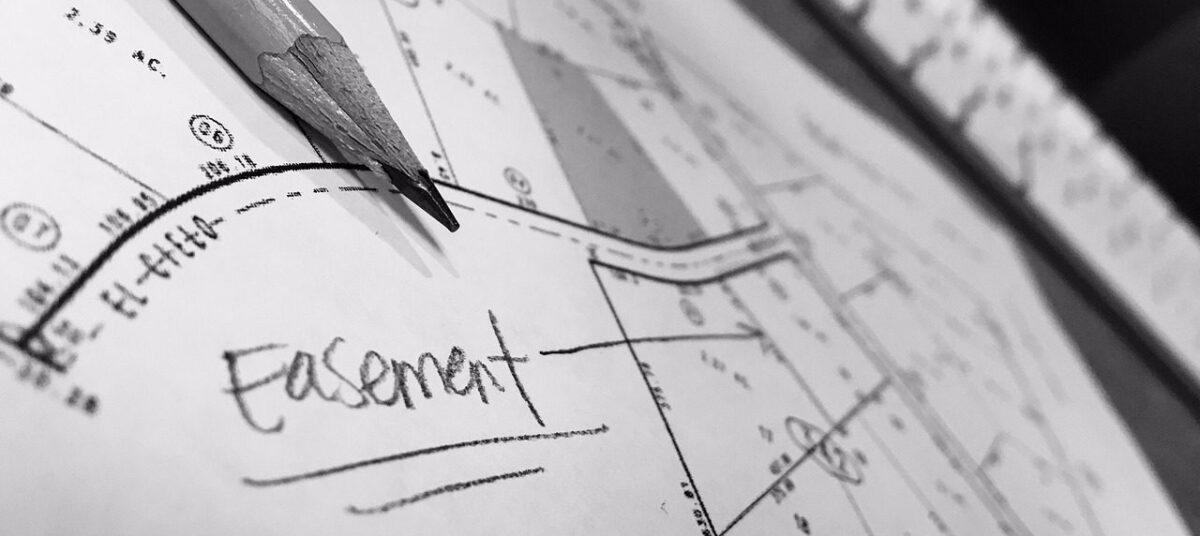By Anastasiya Zasentseva
This article will discuss the process of addressing abandoned easements and their potential removal or modification within New South Wales. It will explain the complexities involved in the removal or modification of abandoned or unused easements, particularly focusing on the legal framework and cases that have addressed this issue.
What is an Easement?
An easement is a ‘right enjoyed by a person with regard to the land of another person. The exercise of which interferes with the normal rights of the owner or occupier of that land’ (Municipal District of Concord v Coles (1906) 3 CLR 96). An easement is essentially a nonpossessory use of a land by a person that is not its landowner. For example, an easement by way of driveway in the event, access to Property B is not possible unless a ‘right of way’ is made on Property A. This is a classic example of an easement where the former benefits from the right, while the latter experiences a limitation on their land use. The land that benefits from the right, Property B in this example, is known as the dominant tenement, while the land that is burdened by this right, Property A, is known as the servient tenement.
Easements are usually registered on both the Titles of the dominant and servient tenements and their non-use doesn’t impact their indefeasible nature. They remain as proprietary rights that pass with the land.
Rights of way, particularly in the context of easements, are essential elements of property access, but their continuance, especially when they are no longer used or necessary, can be a complex legal puzzle.
Application to Registrar-General
When an easement is abandoned, the owner of the dominant tenement can apply to the Registrar-General, as empowered by Section 47 of the Real Property Act 1900, to cancel a recording relating to the easement.[1]
- To justify the removal, evidence must be provided to demonstrate 20 years of non-use (Real Property Act 1900 (NSW) s 49).
- The Registrar-General must serve a notice of intention to cancel the recording on all persons having a registered interest in the land benefiting from the easement.
- The Registrar-General will then assess whether an easement is abandoned based on the evidence, often provided through a Statutory Declaration, detailing observations of non-use and explanations for why the site has been inactive.
Despite these provisions, the Registrar-General’s power to remove an abandoned easement is limited to private parties. Easements benefiting the Crown or public authorities, such as local councils, fall outside the purview of this removal process.
Power of Supreme Court to Modify or Extinguish Easements
Section 89 of the Conveyancing Act 1919 (NSW) empowers the Court to modify or extinguish easements, especially if there are changes in land use or the neighbourhood which suggests that the easement is obsolete. The Act allows courts to treat easements unused for 20 years as abandoned. Removing these easements, however, requires “substantial evidence” and careful legal considerations.
And respectfully, if a party wishes to dispute a section 49 application of the Real Property Act – recording of abandonment – to the Registrar-General, then this issue is dealt with by the Supreme Court under section 89 of the Conveyancing Act.[2]
Principles Regarding the Proof of Abandonment
The principles regarding the abandonment of easements under s 89 of Conveyancing Act are highlighted in the case of Betty Campbell v Peter Douglas Baigent & Ors [2010] NSWSC 1348 and are as follows:
- Abandonment occurs when the dominant owner clearly indicates no intention to use the easement, both at common law and under the Conveyancing Act. This is not easily inferred and requires substantial evidence;
- Evidence of an implied release of the easement is crucial, where extended non-use is strong evidence but might not be solely sufficient;
- The longer the period of non-use, the more likely it is that the easement might be considered abandoned.
The following cases demonstrate the enduring nature of easements and the difficulty in obtaining a court order to extinguish or modify them.
- The case of Chiu v Healey [2003] NSWSC 857 highlighted that extended non-use of an easement isn’t in itself proof of abandonment, especially when there’s a history of property changes and improvements.
- The Court in the case of Effeney v Millar Investments Pty Ltd [2011] NSWSC 708 emphasised that a mere non-use, “without more, however long, cannot amount to abandonment”.
- The case of Castle v Achdjian [2022] NSWSC 1340 highlighted the complexities in extinguishing an easement under section 89(1) of the Conveyancing Act on the ground of obsolescence. The determination of abandonment involves considering all the factual aspects that may suggest the easement has been abandoned. The Court noted that a clear intent from the dominant tenement owner or their successors to cease using the easement is necessary, emphasising that abandonment should not be hastily assumed.
Conclusion:
Abandoned easements can be removed or modified through both administrative and legislative processes in New South Wales. The law provides methods for addressing abandonment, such as application to the Registrar-General or petitioning the Supreme Court under Section 89 of the Conveyancing Act. However, the mere long-term non-use of an easement isn’t sufficient evidence of abandonment, as seen in legal cases where the court scrutinised the context and specific circumstances surrounding non-use. These cases emphasise that proving abandonment requires more than just non-use, demanding comprehensive evidence and consideration of various factors.
This article is not meant to act as legal advice and serve the purpose of providing academically generalised information regarding the general principles regarding the abandonment of easements. If you require qualified legal advice on anything mentioned in this article, our experienced team of solicitors at Foulsham & Geddes are here to help. Please get in touch with us on 02 9232 8033 today to make an enquiry.
[1] Land Registry Service NSW, Registrar General Guidelines, Cancellation of Extinguishment of Easement
[2] Legalwise (2020), Property Series Part 3: Rumours of my demise are greatly overstated

